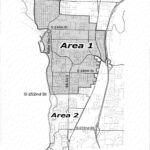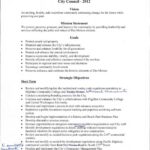At their April 26, 2012 meeting, the Des Moines City Council voted to remove any sound reduction requirements from its building code via (Ordinance #1539). This is exceptional given the fact that the two other cities in the area which had similar building code did not follow suit.
At the time, the City Council would conduct planning retreats outside of the regular meetings–mainly to address what they (rightly) considered to be a post-Great Recession crisis in finances and economic development. At one such retreat, councilmembers had expressed several frustrations with the current noise code, leading to a March 1 Study Session dedicated to the issue.
February 2012
The February Study Session mentions a goal setting meeting in January. Unfortunately there is no recording of that meeting, But here City Manager Tony Piasecki gives a summary and the goal setting statement directs staff to put the idea of deleting the sound code on a future meeting agenda. The video starts at the discussion on that item. The discussion is brief, but it’s telling because Councilmember Carmen Scott makes a motion to change the language from “delete” (the sound code) to “delete or revise“. And the only comment from her colleagues to her motion is “that doesn’t give me any heartburn.”
March 1, 2012
 Well that was fast! At their March 1, 2012 Study Session (Packet), the Council devotes the first hour to revising or repealing the sound code. As background, for new construction, the City had been divided into two Noise Areas, each with differing requirements. Essentially, Area 1 is within the DNL65 (the area eligible for Port Packages) and Area 2, outside. (Burien and SeaTac still have similar approaches.)
Well that was fast! At their March 1, 2012 Study Session (Packet), the Council devotes the first hour to revising or repealing the sound code. As background, for new construction, the City had been divided into two Noise Areas, each with differing requirements. Essentially, Area 1 is within the DNL65 (the area eligible for Port Packages) and Area 2, outside. (Burien and SeaTac still have similar approaches.)

The City expresses the notion that, since the DNL65 is shrinking (ie. “the planes are getting quieter”) these building requirements might be relaxed.
In the discussion, councilmembers mention hearing from residents in favor of this, but it is notable that no one signed up for public comment. Quoting from the packet…
Des Moines’ Sound Code is frequently mentioned by the development community as excessive, not economic or overly burdensome to both home owners who want to upgrade their windows or remodel their homes, or developers looking to provide the lowest cost product to their customers. There are many strong arguments on each side of this issue.Policy questions the Council may wish to consider include:
- Should the Council modify the current Sound Code at this time or wait until later?
- Should Area 2 (south ofS. 252nd) be eliminated?
- Should the southern boundary of Area 1 be moved north from S. 252nd to Kent-Des Moines Road to more closely correspond to the projected 2016 DNL 65 contour?
- Should areas of the City outside the projected 2016 DNL 65 contour be eliminated from Area 1 or, alternatively, have lesser sound transmission control requirements?
- Should the Sound Code apply only to new homes and exclude remodels?
- Should the Sound Code apply to only windows and not other construction features such as insulation or sheetrock?
- Should the City’s code be “advisory”, not mandatory and/or provide for voluntary compliance?
- Should the Building Official have discretion to waive any of the sound requirements based on “equivalent performance” or other special situations?
There is also talk of the Building Department creating an Advisory Brochure, which will explain sound insulation to prospective homeowners and help them choose wisely.
Finally, there is a discussion as to the ramifications of rescinding the sound code with the FAA, which funded the majority of Port Packages. Questions left unanswered were:
- Will new construction be prevented from receiving future FAA benefits?
- If a homeowner replaces Port Package windows, does this permanently preclude any subsequent owners from receiving FAA benefits in the future?
(The answer to both questions now seems to be ‘yes’.)
April 26, 2012
At the April 26, 2012 meeting (Packet), the Council simply voted to remove the sound code entirely, and without creating that Advisory program. There was also no answer given as to the impact of this Ordinance on future FAA participation.
Analysis
In the packet, the staff open with
There are many strong arguments on each side of this issue.
But notice the bullet-list contains only one side of the argument. It’s all about the burdens of sound code and none about benefits.
The Des Moines City Council rescinded the sound code in response to various concerns from developers and residents about cost. The tone of the discussion seems to indicate that the noise levels at the time were tolerable (if not ideal) for decision makers and there is every expectation that the noise levels will decrease based on studies from the FAA. There is zero discussion of health impacts.
- Some people (especially in multi-family buildings) had never received sound insulation as promised in the Port’s 1996 and had given up hope. (Mayor Dave Kaplan says as much from the dais about his condo. “We got screwed by the Port.” There’s some irony there.)
- Many had problems with their Port Packages early on, but when faced with the Port’s indifference decided that the only practical solution was to ask the City to remove the sound code. “Cheap windows are better than bad windows.”
- And developers like at the Blueberry Lane development, wanted lower costs and higher profits–even offering an optional ‘noise reduction package’ for many thousands of dollars which simply brought their homes up to the same level as a Port Package.
- Finally, the Port was in the midst of another Part 150 Study that would further reduce the DNL65, and thus, the Area 1 Boundary. If the Port has ‘data’ showing that the area is getting ‘quieter’, why not remove unncessary/expensive building code? Or so the theory went.
What you don’t hear about in either of these meetings is a discussion of the health impacts. In 2012, noise is still talked about using the FAA’s term of art: “annoyance”. Issues of mold, asthma, chronic illnesses (cardiac) and proper ventilation were not on people’s minds. What was on people’s minds was the post-recession world for a City in the depths of its worst financial crisis ever. The science had been established, but the knowledge and awareness had not yet made it into the national consciousness.
We liken this to the early 1960’s when seat belts were first made mandatory. Although in hindsight the issues are obvious now, back then, many people balked on ‘added costs’ and ‘freedom of choice’. It’s significant, however, how quickly attitudes changed once regulations were established and people were educated as to the benefits.
